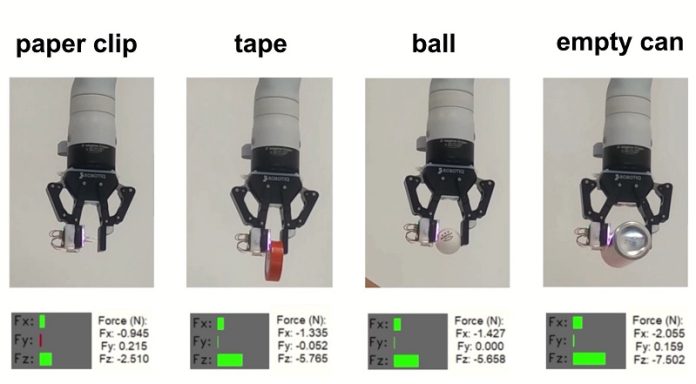
Scientists have made a breakthrough in robotics, bringing us a step closer to creating robots that can feel objects just like us.
They’ve built a cool new sensor that lets robots know how hard they’re holding something, and what the thing they’re holding is shaped like.
This is a huge deal because, up until now, most robot hands didn’t have this ability.
To understand why this is so important, think about how you pick up an egg without breaking it or hold a glass without dropping it.
It’s because your hands can feel pressure, temperature, size, shape, and even pain.
Now, robots could do something similar thanks to this new sensor.
The team behind this exciting development, led by Professor Kaspar Althoefer from Queen Mary University of London, made a sensor called the L3 F-TOUCH.
The L3 stands for Lightweight, Low-cost, and wireless, meaning it’s easy to add this sensor to existing robot hands.
Unlike other sensors that guess how hard a robot is holding something by taking a picture of the grip and analysing it, the L3 F-TOUCH measures the force directly.
This means it’s more accurate and can feel a wider range of pressures. Also, it doesn’t get confused by the shape of the object it’s touching, which can be a problem for other sensors.
When the L3 F-TOUCH touches something, it’s like when we press our fingers against something.
A soft material inside the sensor, similar to rubber, gets squished a bit. By tracking how much this material moves, the sensor can figure out how hard it’s pressing and what it’s touching.
In the future, the team hopes to make the sensor even better. They want it to also feel twisting motions, like when you’re opening a bottle cap.
This could make robots even more helpful, like assisting older people or helping with physiotherapy.
So, the new L3 F-TOUCH sensor might just give robots the human-like touch they’ve been missing, and help them handle things more like us.
The study was published in IEEE Robotics and Automation Letters.
Follow us on Twitter for more articles about this topic.
Source: Queen Mary, University of London.



